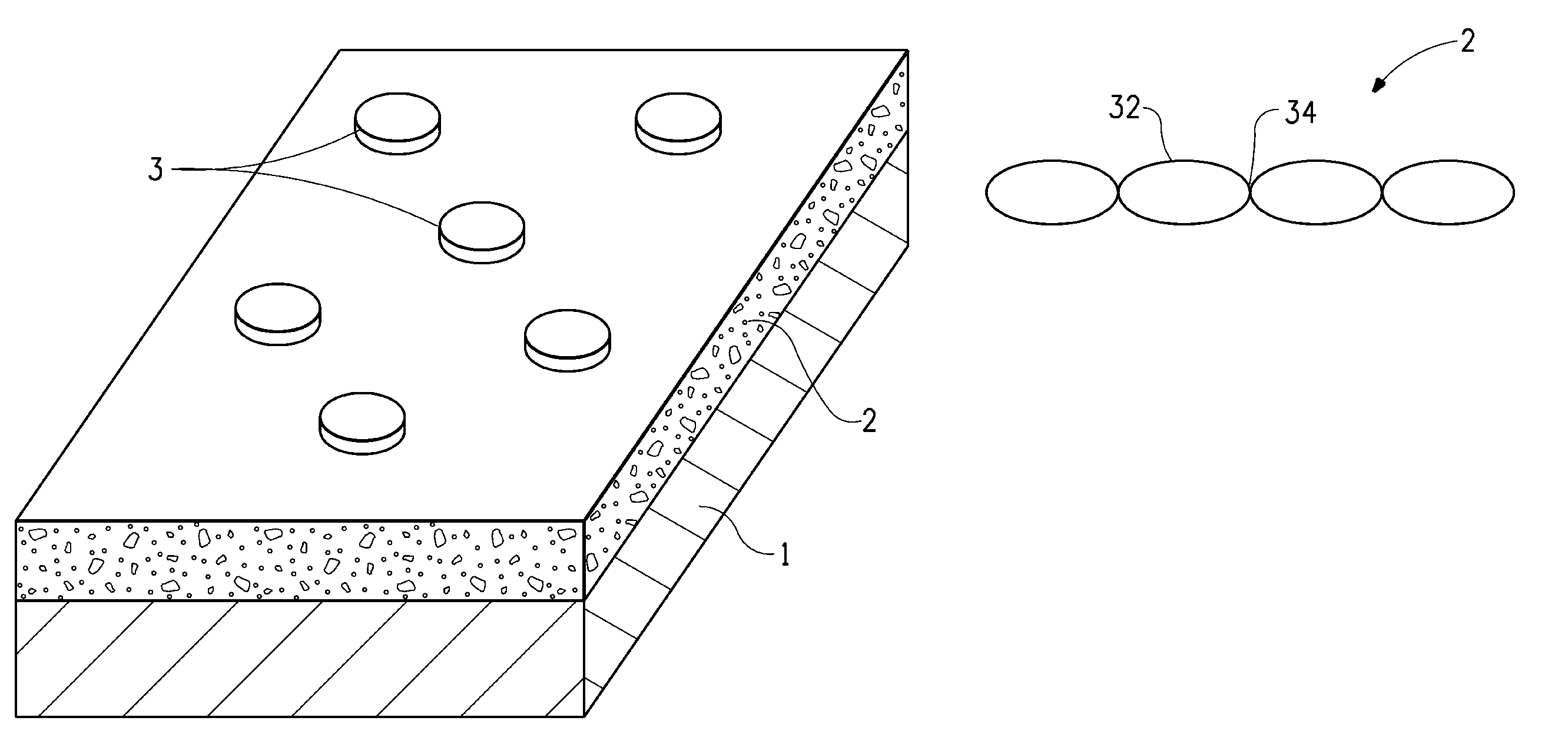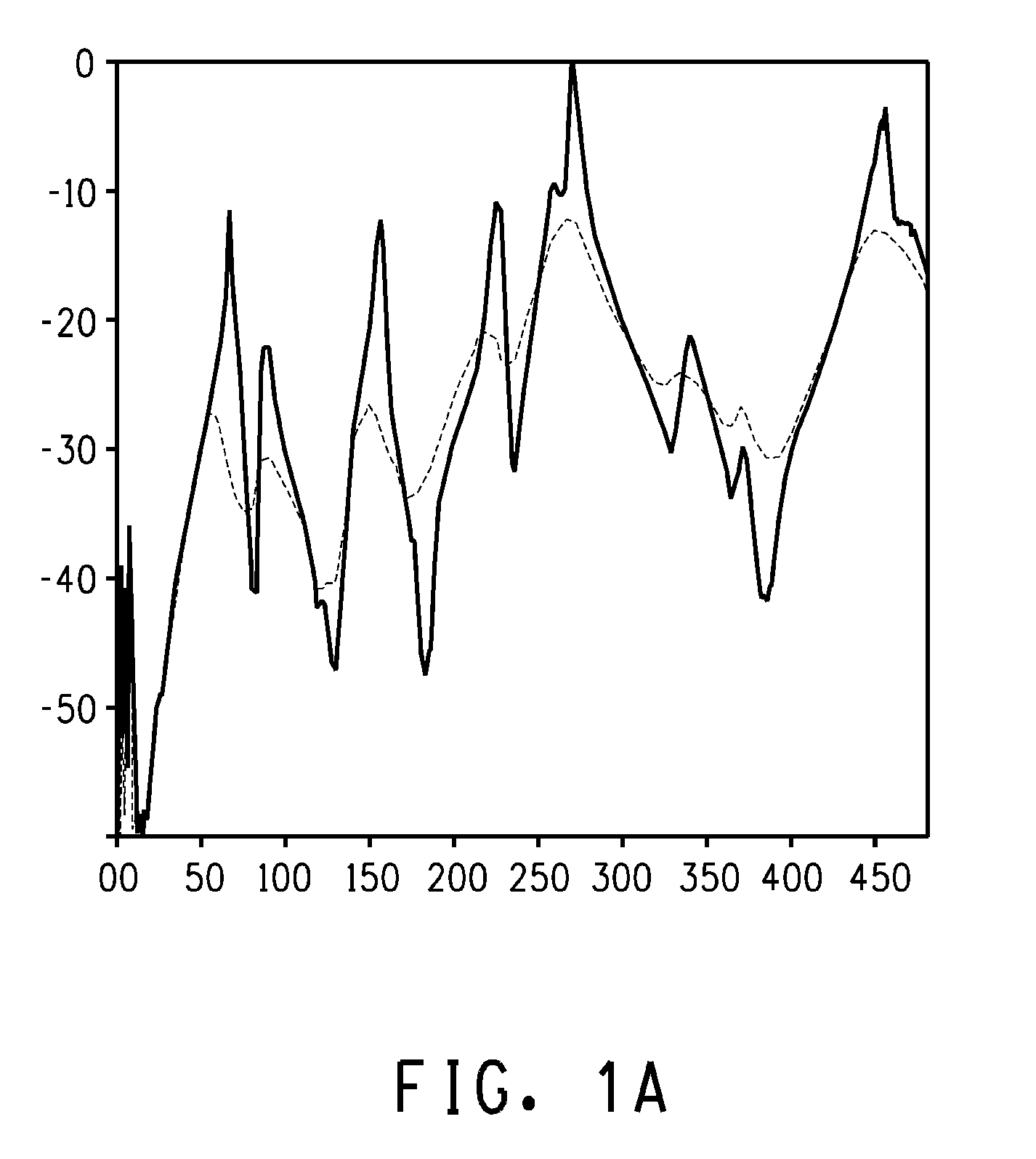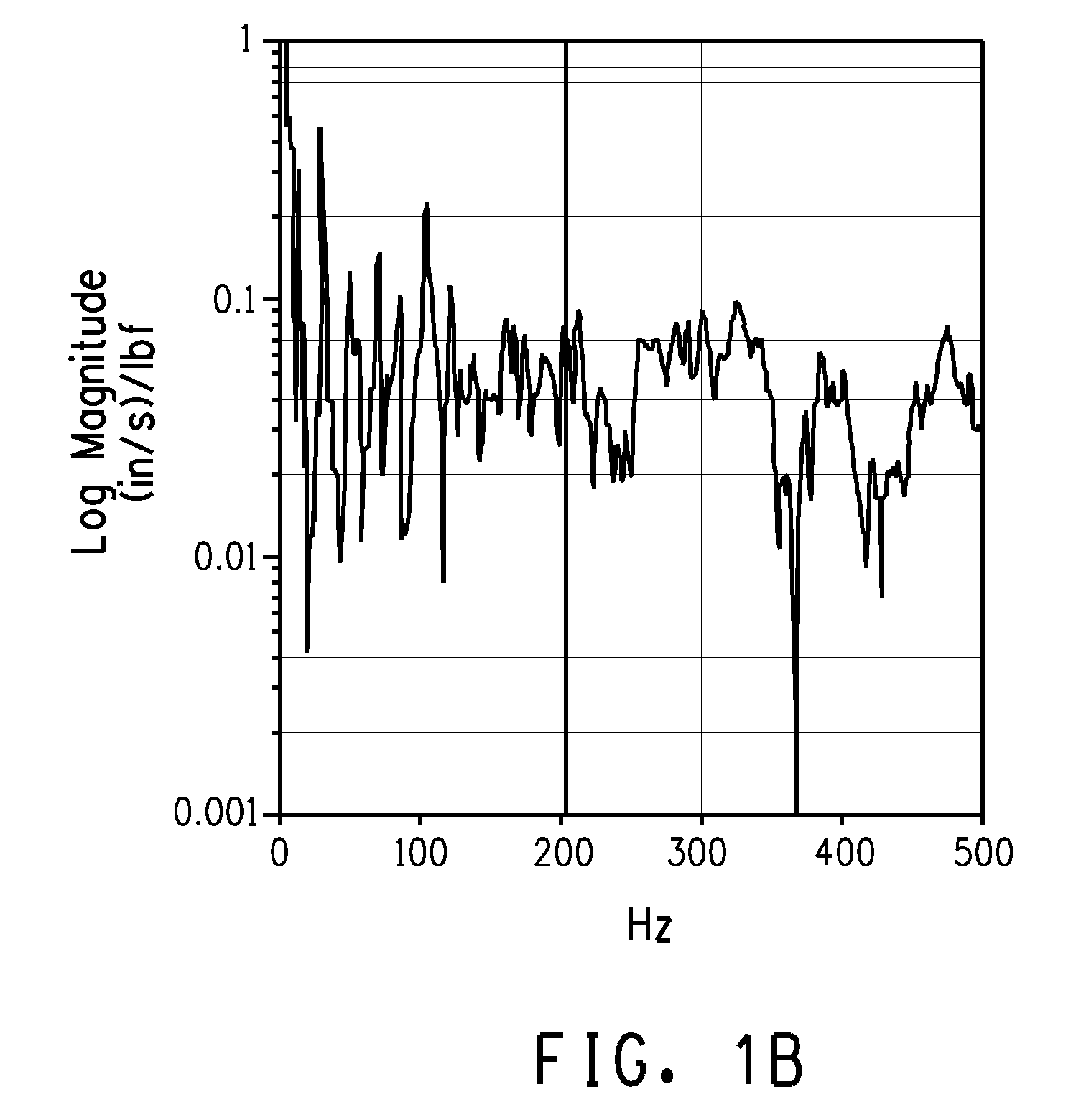Broadband passive distributed tuned vibration and acoustic absorber for modally dense structures
a passive distributed, tuned technology, applied in the direction of shock absorbers, building repairs, shock proofing, etc., can solve the problems of significant vibration or noise, objectionable sound, and high cost of expensive and complex sensing/actuation/feedback control/connectivity systems
- Summary
- Abstract
- Description
- Claims
- Application Information
AI Technical Summary
Benefits of technology
Problems solved by technology
Method used
Image
Examples
example 1
[0075]An absorber according to the invention was formed using a layer of open cell melamine foam (white Willtec® foam from Illbruck Acoustic Inc., Minneapolis, Minn.) having a patterned stiffness variation developed by quilting. The original melamine foam layer was 13 mm thick with a basis weight of 9.4 kg m3, 120 rayls specific air flow resistance, and relatively constant average normalized dynamic stiffness k* of 3,500 N / m / cm2 (determined using the test set up described herein and illustrated in FIG. 3). The foam was quilted with a 0.1 mm thick, 17 g / m2 basis weight nylon 6,6 spunbond scrim on both sides of the foam. A pattern of approximately 11 cm×11 cm diamonds was quilted into the foam, with a resultant thickness varying from 6 mm to 13 mm.
[0076]Mass elements for use in the example absorber were flat zinc coated steel disks of outer diameter of 2.54 cm with a hole in the middle and cross section area of 3.35 cm2. The ratio of the individual mass element weight to the mass cont...
example 2
[0082]An absorber according to the invention was formed using a layer of open cell melamine foam (white Willtec® foam from Illbruck Acoustic Inc.) as in Example 1, the foam layer having a normalized dynamic stiffness k* of 3,500 N / m / cm2.
[0083]Mass elements for use in the example absorber were flat zinc coated steel disks of outer diameter of 25 cm with a small hole in the middle and cross section area of 4.85 cm2. The ratio of the individual mass element weight to the mass contact area was varied by varying the mass of the individual mass elements. Three sets of mass elements having the same cross section area and different masses were selected. One set of mass elements had a mean weight of 6 g (standard deviation of 0.1) and a mass ratio μ1 of 0.0245; one set of mass elements had a mean weight of 12 g (standard deviation of 0.6) and a mass ratio μ2 of 0.0245; and one set of mass elements had a mean weight of 18 g (standard deviation of 0.03) and a mass ratio μ3 of 0.0203. The mass ...
example 3
[0088]An absorber according to the invention was formed having two viscoelastic layers and two corresponding sets of mass elements in contact with both viscoelastic layers. The absorber was adapted to a modally dense wall having studs spaced 40.64 cm apart. The first viscoelastic layer was formed from the foam layer used in Example 1. The foam was quilted with a spunbond scrim on both sides of the foam as described in Example 1.
[0089]Two sets of mass elements were selected for use in contact with the first viscoelastic layer. The first set was flat zinc-coated steel disks having an outer diameter of 2.54 cm with a hole in the middle and cross section area of 3.35 cm2. The ratio of the individual mass element weight to the mass contact area was varied by varying both mass of the individual mass elements and the contact area of mass elements. The weight of the mass elements was varied between 4.65 g and 6.6 g, with a mean weight of 5.69 g (standard deviation of 0.45). The second set o...
PUM
 Login to View More
Login to View More Abstract
Description
Claims
Application Information
 Login to View More
Login to View More - R&D
- Intellectual Property
- Life Sciences
- Materials
- Tech Scout
- Unparalleled Data Quality
- Higher Quality Content
- 60% Fewer Hallucinations
Browse by: Latest US Patents, China's latest patents, Technical Efficacy Thesaurus, Application Domain, Technology Topic, Popular Technical Reports.
© 2025 PatSnap. All rights reserved.Legal|Privacy policy|Modern Slavery Act Transparency Statement|Sitemap|About US| Contact US: help@patsnap.com



